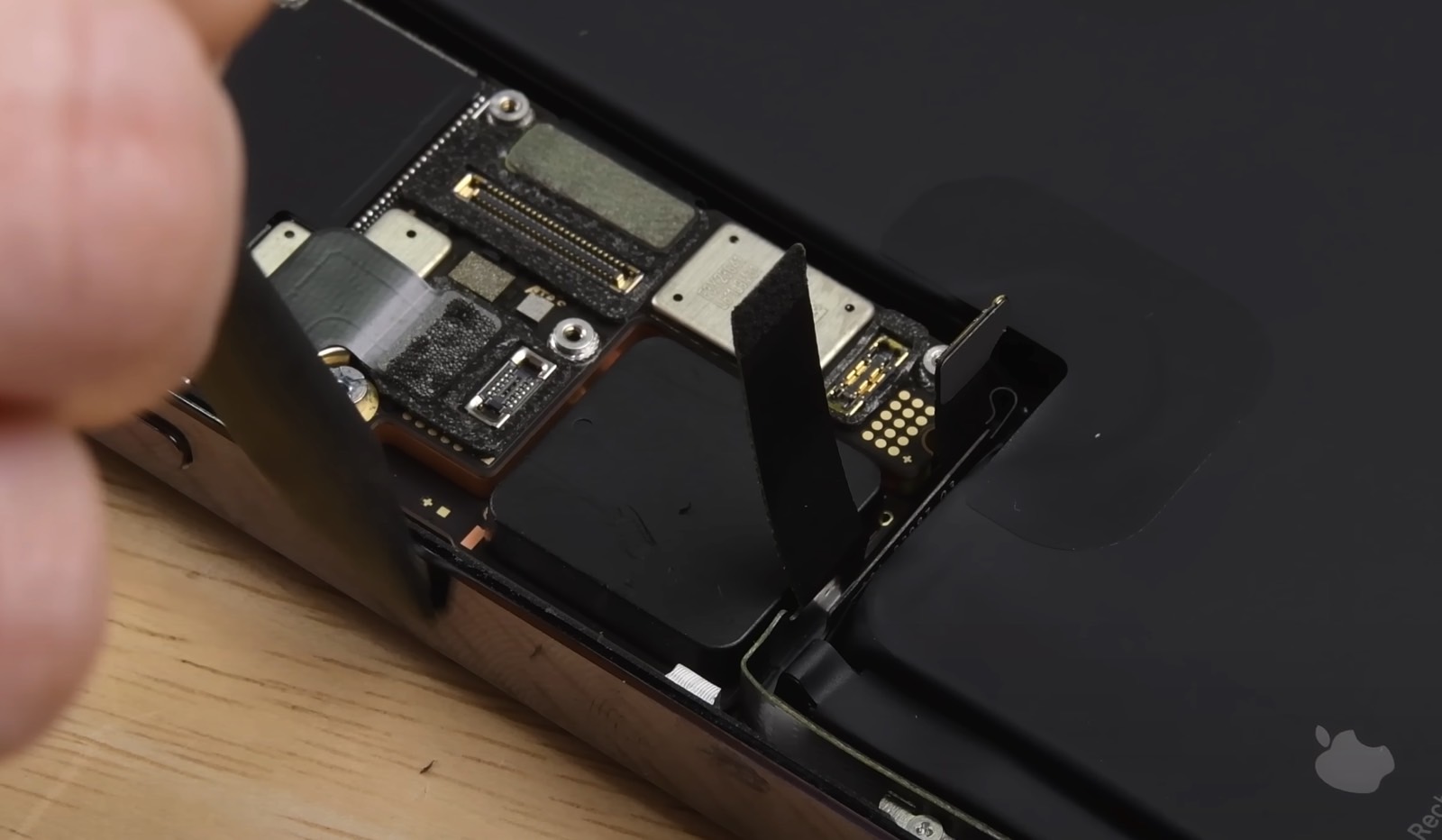Rumors in recent years have said that the iPhone would abandon its physical SIM card in the US. Apple did just that with the iPhone 14 series. Rather than a SIM card, the US versions rely on eSIMs alone. International models still ship with a physical SIM card tray, and they support one additional eSIM card. This is not expected to change going forward with the iPhone 15.
But a new leak indicates Apple is changing how the SIM card slot connects to the iPhone logic board. Apple is apparently tying it to the USB-C connector. This could simplify the repair process, which is obviously a welcome change. More interestingly, it might let users reenable physical SIM card functionality on US-bound iPhones.
Leaker Majin Bu posted the images below on Twitter/X, showing the iPhone 15’s purported SIM tray. Its connector is integrated with the USB-C tail plug cable rather than the logic board.
It’s unclear if the parts are genuine, and there’s no way to verify their authenticity until the iPhone 15 is released. Only then will organizations like iFixit tear the new handsets down and reveal their inner workings.
Also, it’s unclear where the information comes from. This particular leaker isn’t always a source of accurate iPhone scoops.
I never expected Apple to change the way its iPhone SIM card works. That is, US iPhone 15 should continue to offer eSIM-only cellular connectivity. International models should feature both a physical SIM card and eSIM support.
Down the road, I’d expect more international markets to move away from physical SIMs. In turn, iPhones sold in those regions would also abandon SIM cards.

The leaked images show that some iPhone 15 units will have a SIM tray on board. That might be the main takeaway for iPhone buyers who value the convenience of swapping out SIM cards without worrying about activating or deactivating them digitally.
Most buyers don’t know where the SIM tray connects to the logic board. But repair shops certainly care about it. Swapping a faulty SIM tray might be easier now that it’s connected to the USB-C port. Or Apple might want to replace both the USB-C port and the SIM tray when one malfunctions.
Another benefit might be converting eSIM iPhones to physical SIM iPhones. That’s speculation from Apple Insider, however. Also, even if adding a physical SIM to an eSIM iPhone 15 unit might be technically easier, the software will also have to support it.
As a reminder, the eSIM iPhone 14 units that Apple sells do not have SIM trays. They feature chunks of plastic instead.
Finally, the same leaker posted a different image on Twitter/X that shows that shows the absence of a chip to handle encryption. It’s unclear what that means. Maybe the iPhone 15 won’t require Made for iPhone (MFi) accessories.
The iPhone 15 series will probably hit stores on September 22nd, 10 days after the launch event. Once the new handsets are out, we’ll see the first teardowns take place.







